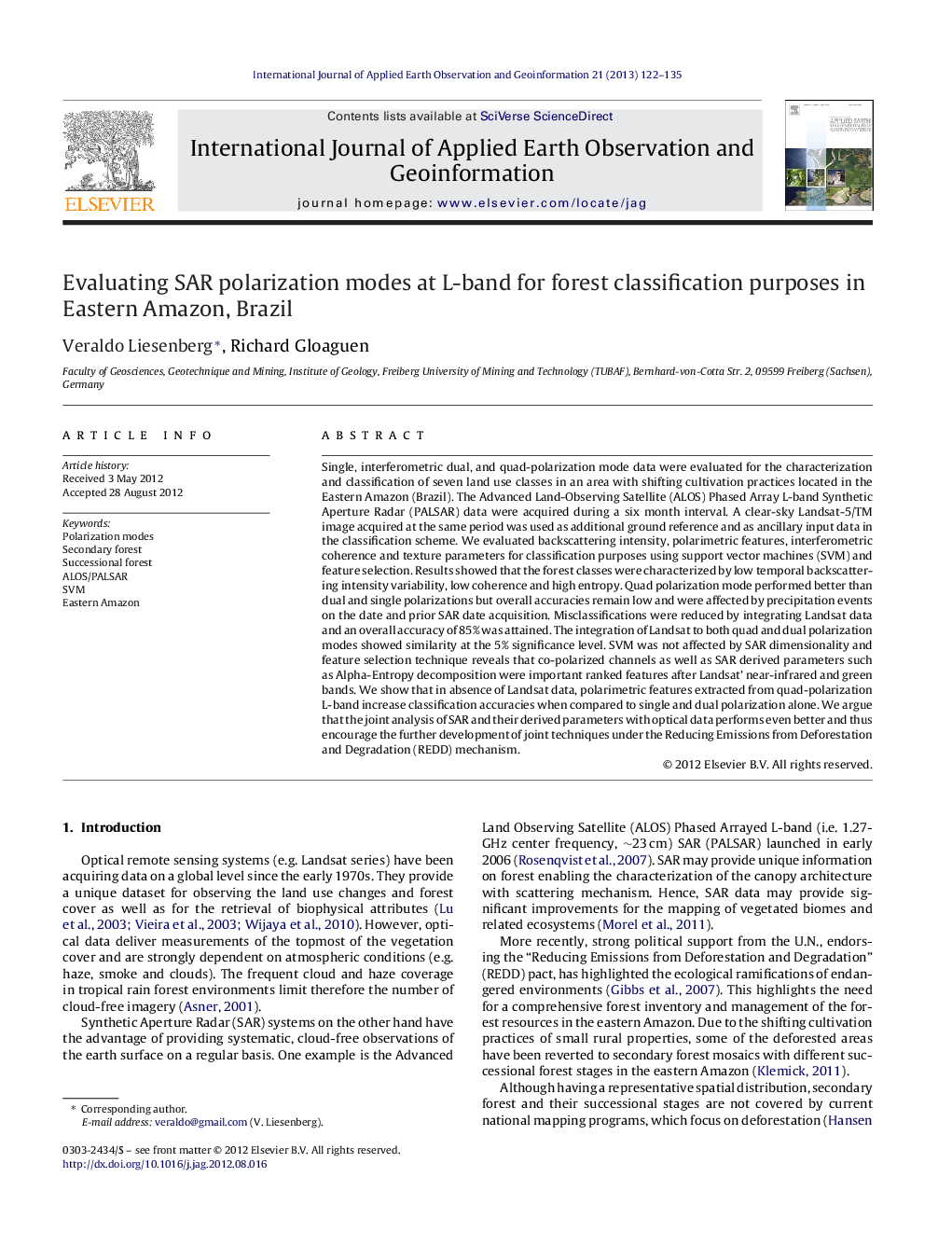| کد مقاله | کد نشریه | سال انتشار | مقاله انگلیسی | نسخه تمام متن |
|---|---|---|---|---|
| 4464846 | 1621839 | 2013 | 14 صفحه PDF | دانلود رایگان |

Single, interferometric dual, and quad-polarization mode data were evaluated for the characterization and classification of seven land use classes in an area with shifting cultivation practices located in the Eastern Amazon (Brazil). The Advanced Land-Observing Satellite (ALOS) Phased Array L-band Synthetic Aperture Radar (PALSAR) data were acquired during a six month interval. A clear-sky Landsat-5/TM image acquired at the same period was used as additional ground reference and as ancillary input data in the classification scheme. We evaluated backscattering intensity, polarimetric features, interferometric coherence and texture parameters for classification purposes using support vector machines (SVM) and feature selection. Results showed that the forest classes were characterized by low temporal backscattering intensity variability, low coherence and high entropy. Quad polarization mode performed better than dual and single polarizations but overall accuracies remain low and were affected by precipitation events on the date and prior SAR date acquisition. Misclassifications were reduced by integrating Landsat data and an overall accuracy of 85% was attained. The integration of Landsat to both quad and dual polarization modes showed similarity at the 5% significance level. SVM was not affected by SAR dimensionality and feature selection technique reveals that co-polarized channels as well as SAR derived parameters such as Alpha-Entropy decomposition were important ranked features after Landsat’ near-infrared and green bands. We show that in absence of Landsat data, polarimetric features extracted from quad-polarization L-band increase classification accuracies when compared to single and dual polarization alone. We argue that the joint analysis of SAR and their derived parameters with optical data performs even better and thus encourage the further development of joint techniques under the Reducing Emissions from Deforestation and Degradation (REDD) mechanism.
► A joint analysis of L-band SAR and optical Landsat data contribute to increase classification accuracy in a complex shifted cultivation environment.
► Precipitation events impacts classification accuracy significantly.
► In case of optical data availability, the integration of both quad and dual polarimetric performed similar classification results.
► When optical data are not available, quad polarimetric performed the best classification results than dual and single polarization.
► The classification accuracy of successional forest stages are improved with data integration even in complex settings.
Journal: International Journal of Applied Earth Observation and Geoinformation - Volume 21, April 2013, Pages 122–135